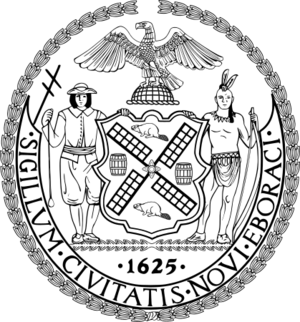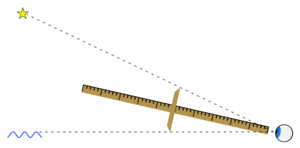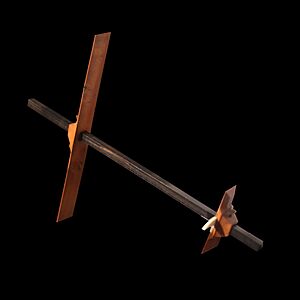Jacob's staff facts for kids
The Jacob's staff is an old tool used for measuring angles. It's also known by names like cross-staff or fore-staff. In its simplest form, it's a stick with length marks. Most Jacob's staffs were more complex. They often had special features for measuring and keeping them steady.
This tool was mainly used for two things:
- In astronomy and navigation, it helped measure angles. For example, it could find the angle between the horizon and a star. Later, more accurate tools like the sextant replaced it.
- In surveying, it was a vertical pole. This pole would stick into the ground or sit on it. It was used to hold a compass or other measuring tools.
A very basic Jacob's staff could also help guess the height or angle of an object. This was useful when comparing something to the person using the staff.
Contents
Measuring Angles in Space and at Sea
When used for navigation, this tool was often called a cross-staff. Sailors used it to find angles. For example, they could measure the angle between the horizon and the North Star. They could also measure the angle to the sun. This helped them figure out their ship's latitude (how far north or south they were).
The cross-staff could also measure the angle of an object's top and bottom. If you knew the object's height, you could find its distance. Or, if you knew the distance, you could find its height. When used for looking at stars, it was sometimes called a radius astronomicus. Today, the name "Jacob's staff" mostly refers to the pole used by surveyors.
Why Is It Called Jacob's Staff?
No one is completely sure where the name "Jacob's staff" came from. Some people think it's named after a person from the Bible, Jacob. You can read about him in the Book of Genesis. It might also be named after the Orion constellation. Orion was sometimes called Jacob on old star charts. Another idea is that it comes from the "Pilgrim's staff." This was a symbol of Saint James, whose name in Latin is Jacobus. The name cross-staff is simpler. It just comes from its cruciform (cross-like) shape.
Who Invented the Jacob's Staff?
The first Jacob's staff was a single pole tool. It was made in the 1300s for measuring stars. A Jewish mathematician from France, Levi ben Gerson, described it first. He wrote about it in his book "Book of the Wars of the Lord." He called it "Revealer of Profundities" in Hebrew. But Christian people at the time called it "Jacob's staff." It might have been invented by another French-Jewish astronomer, Jacob ben Machir ibn Tibbon. He lived around the same time.
Some people thought an Austrian astronomer named Georg Purbach invented it later. But he was born much later, in 1423. So, that's probably not right. The idea for this tool might even go back to the Chaldeans around 400 BCE.
A Chinese scientist named Shen Kuo (1031–1095) might have described a similar tool. He wrote about it in 1088. He found an old crossbow-like device. It had a sight with marks that could measure mountain heights. He compared it to how mathematicians use triangles to measure heights.
Later, during the Renaissance in Europe, people made improvements. A Dutch mathematician, Adriaan Metius, made his own version. Another Dutch mathematician, Gemma Frisius, made it even better. In the 1400s, a German mathematician, Johannes Müller (also called Regiomontanus), made the tool very popular. It was used for measuring land and stars.
How Was It Built?
The original cross-staff had a main pole. This pole had marks on it for length. A cross-piece (like BC in the picture) could slide up and down the main pole. On older tools, the ends of the cross-piece were flat. Newer ones had brass ends with small holes for looking through. Sometimes, these brass parts are the only pieces of an old cross-staff that survive today.
Often, a Jacob's staff came with several cross-pieces. Each one could measure a different range of angles. Three cross-pieces were common. Later, people used just one cross-piece with pegs. These pegs could be moved into different holes. This made the tool more flexible with fewer parts.
How Was It Used?
To use the Jacob's staff, a person would place one end of the main pole against their cheek. It would sit just below their eye. They would look at the horizon through the lower end of the cross-piece (or through its hole). Then, they would slide the cross-piece until the sun or star was at the other end.
Once aligned, they could read the position of the cross-piece on the main pole's scale. This number was then looked up in a table. The table would convert the reading into an angle.
Cross-Staff for Sailors
The Jacob's staff was not first used at sea. But it became important during the Age of Discoveries. A sailor named João de Lisboa wrote about using it at sea in 1514. Johannes Werner also suggested using it on ships in 1514. Better versions were then made for navigation. John Dee brought it to England in the 1550s. These improved tools had degrees marked right on the rod. This type of tool is more correctly called a cross-staff.
The cross-staff was tricky to use. The observer had to hold the pole exactly against their cheek. They also had to look at the horizon and a star without moving the tool. Plus, looking at the sun directly was uncomfortable. It made it hard to get an exact altitude for the sun. Sailors started adding smoked glass to the ends of the cross-pieces. This helped reduce the sun's glare.

Over time, other tools replaced the cross-staff for navigation. First came the backstaff or quadrant. These tools didn't make you stare directly at the sun. Later, the octant and the sextant became popular. Some sailors even changed their cross-staffs to work more like a backstaff. They added vanes (small sights) to the ends. This allowed them to line up the horizon with the sun's shadow. This made the tool more accurate.
Another type of cross-staff was the spiegelboog. It was invented in 1660 by Joost van Breen from the Netherlands.
In the end, the backstaff was easier to use for many sailors. However, some experts say the cross-staff was actually more accurate. The Dutch East India Company stopped allowing backstaffs on their ships in 1731. Octants were not allowed until 1748.
Jacob's Staff in Surveying
In surveying, a Jacob staff is a monopod. This is a single, straight rod. It's made of a non-magnetic material. The bottom is pointed and covered in metal so it can stick into the ground. It has a screw base and sometimes a ball joint at the top. This is used to hold a compass, a transit, or other measuring tools.
The term cross-staff can also mean something different in surveying history. While the astronomy cross-staff was used to measure angles, two other tools were also called cross-staffs:
- Cross-head or surveyor's cross: This was a drum or box-shaped tool on a pole. It had two sets of sights that were at right angles to each other. Surveyors used it to measure distances at right angles. Some fancy versions had a compass and spirit levels on top. French versions were often eight-sided.
- Optical square: This was a better version of the cross-head. It used two mirrors set at 45-degree angles. This let the surveyor see along both measuring lines at the same time.
Many old surveying tools were used on a Jacob's staff. These include:
- Cross-head or surveyor's cross
- Graphometer
- Circumferentor
- Holland circle
- Miner's dial
- Optical square
- Surveyor's sextant
- Surveyor's target
- Abney level
Even today, some modern tools, like optical targets for laser surveying, are still used with a Jacob's staff.
Jacob's Staff in Geology
In geology, the Jacob's staff helps measure the thickness of rock layers. This is especially useful when the rock layers are hard to see. It's also helpful when the way the rocks are shaped makes it hard to use a simple tape measure. There can be some small errors when using this tool. This is because it doesn't have a perfect way to measure thickness. Newer, more precise designs have a laser. This laser can slide up and down the staff. It can also spin around in a flat circle, parallel to the rock layers.
See also
- Backstaff
- Cross of St James
- Pilgrim's staff
- Tacheometry
- As a symbol in Scouting: 5th World Scout Jamboree





